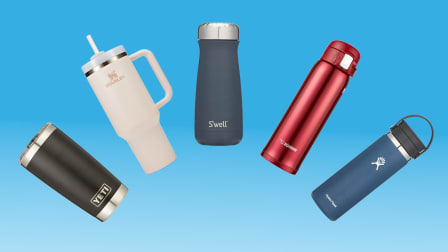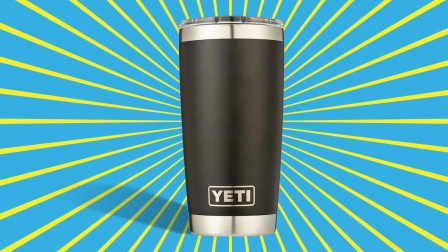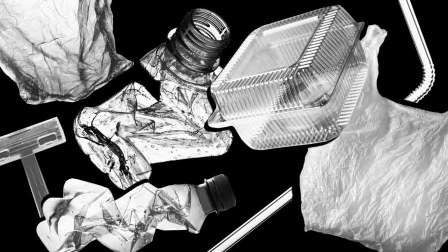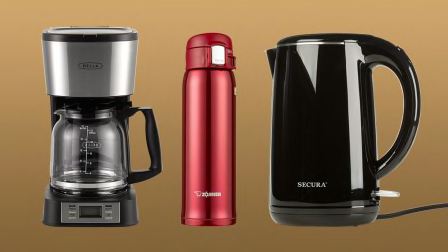How Often Should You Be Cleaning Your Beloved Stanley Tumbler?
There are probably some unpleasant hitchhikers in, and on, your favorite reusable cup
When you shop through retailer links on our site, we may earn affiliate commissions. 100% of the fees we collect are used to support our nonprofit mission. Learn more.
The news around Stanley’s highly sought after 40 ounce Quencher H2.0 Flowstate Tumbler is nonstop lately—from the recent concerns about the use of lead inside some cups to a Stanley cup that survived a car fire (it’s true!). Haven’t heard those stories? Ask your kids how many of their classmates have started bringing their new cup to school. Or just look on social media, which has exploded with mentions of the insulated cup. There are videos of children overjoyed at receiving one for the holidays and adults with extensive collections of the cup in dozens of colors.
How to Clean Your Stanley Tumbler
When we reached out to Stanley to find out the best way to clean their Quencher tumbler, they gave us detailed instructions for cleaning it step by step. Kyle Casteel, senior hydration product manager at Stanley, said, “The easiest way to clean your Stanley is to toss it in the dishwasher, but first, check the bottom of your Stanley to make sure it reads ‘dishwasher safe.’ The majority of our products, including the Quencher, are dishwasher-friendly.” And, all parts of the Quencher are dishwasher safe, according to the brand.
If you don’t run your dishwasher every day or prefer to hand wash your Stanley, warm water and a mild detergent is usually all you need. He stressed that users should separate all parts of the tumbler. Those parts that should be separated from the tumbler include the lid, straw, and the tab on the lid. “Use soap and a sponge to clean the outside of the straw and a narrow brush to clean the inside.” After you’ve scrubbed all parts inside and outside with a sponge, all parts should be rinsed in warm water and towel dried or allowed to air dry. If you’re a visual learner, the brand recently published a TikTok where they demonstrate the entire cleaning process on camera, including how to disassemble it.
When you think your product needs a deeper clean, like after tea or coffee has left stains behind or you’ve let the remnants of a strawberry banana smoothie sit in the tumbler for one day too long, Casteel suggested using baking soda. “Use a mixture of one part baking soda and one part warm water, and soak for up to an hour. Then clean with mild detergent once the solution is rinsed out.” Jim Rogers, CR’s head of product safety testing, said that if you see any spots inside of the tumbler, a bit of Ajax or another scouring powder cleaner and a scrubbing brush might help. Note that this may damage the color coating on the exterior of your Stanley Quencher, so you should only try it on the inside of your tumbler (protect that coveted pink cup). Rogers had some additional recommendations for users looking to keep their cups germ-free. “Always rinse your tumbler out after use, even after just drinking water but especially after drinking juices, soda/pop, smoothies etc.” Don’t forget to clean the straw with a narrow brush after every use too.
How Often Should You Clean Your Stanley?
If you’re only giving your Stanley a rinse before refilling, or washing your cup just once in a while, you aren’t cleaning it enough, according to Casteel. “Ideally, your Stanley Quencher or other favorite Stanley should be washed after each use.” If you’re drinking things other than water this is especially important, he says. And a good wash isn’t limited to just the inside of your Stanley. “Keep your Stanley clean both inside and out for sanitary sipping.” A study published in 2017 in the journal Food Protection Trends, which tested the exterior and interior of 90 reusable water bottles for the presence of different microbes, found that the exterior of all the bottles showed “marked microbial contamination level” on the exterior of reusable water bottles made from glass, metal, and hard and soft plastic. This highlights the importance of cleaning both the exterior and interior of water bottles.
What Happens If You Don't Clean Your Stanley Frequently Enough?
A quick look at the search results on TikTok for “Stanley mold” and you’ll see plenty of videos of the kind of debris people find in their Quenchers, especially under the tab on the lid. The black debris users spot in their reusable cups could be mold, but according to Paula Cannon, PhD, a professor of microbiology at the Keck School of Medicine of USC, it could actually be bacteria forming a film. It’s also important to keep in mind that this can happen with any reusable cups, not just ones from Stanley, says Cannon. This is true “especially if you have something in it other than water,” she says
“I think much of the "gunk" people can see comes from not rinsing out the cup, especially after drinking smoothies, flavored drinks, etc., and not rinsing/washing the lid well,” says Rogers. “Additionally, if your lid has a rubber gasket or seal on the lid, you can get the gunk, which can be bacterial growth, under the gasket and in the lid groove.” The Stanley Quencher doesn’t have a rubber gasket in the lid, but it should be removed from the cup and washed thoroughly nonetheless.
Interestingly, two studies, published in 2017 and 2018, found that the frequency of cleaning (self-reported by study participants) had no statistically significant difference in the amount of bacteria found in reusable water bottles. Researchers of the study from the Food Protection Trends journal hypothesized that this could be due to the fact that study participants “may over- or underreport their performance, either because they cannot remember clearly or because they wish to present themselves in a socially acceptable manner, which is referred to as social desirability bias” (aka, no one wants to admit they have some kind of gross habits).
The Bottom Line
Bottom line is, if you’re drinking out of your new Stanley Quencher every day, you should give it a good wash more frequently than you’re probably currently doing. If you haven’t picked up a new Stanley Quencher, you should still give your reusable cup a wash after every single use. If your cup has a rubber gasket, take a look under there (prepare for a jump scare), and remember Rogers’ advice about cleaning this part of the cup. “Get used to prying free the rubber gasket and cleaning behind it. I soak the gasket and the lid in warm soapy water and then take a scrubber to the gasket and the groove that it fits into on the lid. If you have used your cup for a while and have not cleaned the gasket/groove, you may be surprised what you can grow under those gaskets.”





























